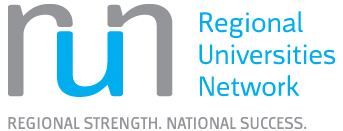Coral is king as Queenslanders weigh up cash splash for Reef
A new study has found Queenslanders would hand over their hard-earned if it meant improving coral cover on the Great Barrier Reef (GBR) – even those who rarely or never visit the world-famous natural wonder.
The research, by CQUniversity economists Dr Jeremy De Valck and Professor John Rolfe, surveyed residents from coastal communities along the reef, and south-east Queensland urban dwellers.
The research, published in Marine Policy journal, asked more than 900 participants how much they would be willing to pay to support different types of GBR-related policies: restoring coral reefs, restoring seagrass beds, or developing new tourism and recreational facilities.
Dr De Valck said the answer came back clear: people strongly favour ecological restoration over recreational development, and value the Reef as more than just a holiday spot.
Households were willing to pay between $119 and $157 per year over five years if it improved coral reef cover by 1 per cent — around three times more than they would pay for seagrass meadow restoration, and ten times more than for new recreational or tourism amenities.
“Interestingly, many respondents weren’t really motivated by the idea of visiting the Reef themselves, but more by non-use values; a moral duty to protect the Reef for future generations, or the belief that it’s a kind of ecological insurance in an uncertain future,” Dr De Valck explained.
People living near the Reef who had visited it in the past year were notably less enthusiastic about expanding recreational development, likely concerned that more visitors could crowd out the peaceful experience they value today.
Dr De Valck, a Brisbane based environmental economist, said the findings could help inform state and federal policies to protect the Reef.
“Asking people to put a dollar value on the Reef and its ecosystems helps highlight just how important our natural assets are to people,” he explained.
“While it’s not a perfect system, using money as a common language makes it easier to compare the value of nature to other things governments might spend money on.”
The Australian Government has currently committed $1.2 billion to GBR spending across 2022 to 2030, and the Queensland Government is spending more than $1 billion from 2015 to 2026.
“Averaged out, this year alone that’s $233 million, $22 per Australian household – roughly the price of a chicken parmy at your local pub,” he said.
“This study shows that most Queenslanders would actually be ready to pay more than that to preserve coral reefs.”
Dr De Valck and Professor Rolfe hope decision-makers, from the Great Barrier Reef Marine Park Authority (GBRMPA) to local councils and natural resource management bodies, tap into the study’s powerful information.
“Investments in the Reef isn’t just a policy obligation; they’re backed by strong public support, to protect a globally significant ecosystem for the future,” Dr De Valck said.
CQUniversity's Centre for Regional Economies and Supply Chains (CRESC) is committed to economic and business systems research and improves quality of life in regional Australia and beyond, and the Coastal Marine Ecosystems Research Centre (CMERC) is the only research facility focused on the southern Great Barrier Reef, providing sustainable solutions to protect the reef, support Australia’s blue economy.
